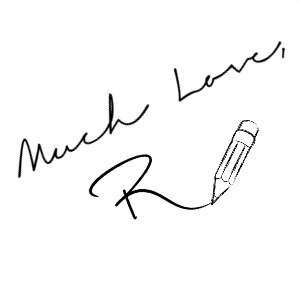Is eyebrow transplant effective if my brows have always been sparse?
4:57:00 AM
Hello Chicsters!
Sparse brows occur for numerous reasons. Sometimes, it is your genes. Scarring could be your issue. Most often, it is due to over plucking your brows in your younger years.
You cannot turn back time and teach your younger self about what is to come; though many people will wish they could. You seek an alternative instead, such as powders, tattoos, liners, fake brows that resemble pasted on felt, or put yourself through whatever the new fad that promises thicker, longer, or darker brows. Alternatively, you can consider an eyebrow transplant that uses real hair and never appears fake.
Who Should Consider An Eyebrow Transplant?
Unless you have a medical condition that prevents the growth of hair, like alopecia, anyone with genetically thin, scarred, or over-tweezed brows is a potential candidate. Both men and women can benefit from the procedure too. If for any reason your surgeon is not sure, they might request a second opinion from a dermatologist or order a biopsy first.
How the Transplant Works?
A plastic surgeon should perform your transplant. They will determine whether a transplant is the right choice for you and base this decision on your current health and history during your consultation. Even if you believe it is minor, you should be honest with your surgeon about your health. Not doing so can lead to complications.
During the first step of the procedure, you will work with your surgeon to design your new eyebrows. This also gives your surgeon a general idea of how many hairs he or she will need to give you the look you want. That number can be anywhere from 50 to 400.
Once you have agreed to a design, your plastic surgeon will give you a sedative and a special device will inject anesthesia to minimize pain. Your surgeon will graft your hair, usually from the back of your scalp, to use in the procedure. The removal process varies, but a surgeon will take hairs out at the follicle using one of two techniques. Which technique is decided on a patient-by-patient basis; they are called follicular unit extraction (FUE) and follicular transfer (FT). The difference is in how your plastic surgeon removes the hair from your scalp. FUE takes out your hairs one by one. FT is strip harvesting. Before settling on a method, your surgeon will consider your hairstyle, ethnicity, and any goals or concerns you might have.
Next, a specialized team will prepare the strands under a microscope to ensure fit and compatibility with the natural curve of your brow and ready them for the transplant. On the day of your transplant, your surgeon will make tiny incisions called recipient sites. Your surgeon will place them in order to direct, angle, and graft your new brows. Hours after the start of your procedure, your surgeon will check with you to make sure you are pleased with both shape and density.
How Long Before You See Results?
You will begin to see results within the first week, but your brows will not be at their fullest for at least a year. Your new brows, however, will root within the first four months. When looking for a surgeon, you should be sure to check out their portfolio of before and after shots. Most include photos at the four-month mark too.
If you decide you still want fuller eyebrows at the one-year point or beyond, you can consult with a surgeon to consider a second procedure.
What Is The Aftercare?
Downtime is minimal and you can typically return to work after three days. Patients who have had the procedure say it is similar to healing from a tattoo. You can expect a little redness and tenderness, but any discomfort disappears within a few days. If your surgeon used sutures at your hair donation site, they will dissolve on their own.
Other Side Effects
Minor crusting can occur where your surgeon placed your new hairs. That clears up in about a week or less. Occasionally, patients will experience mild tenderness, swelling, and significant bruising around the eyes for the first few days. While this can be alarming, it is normal.
At week two or three, your transplanted hairs do fall out. Again, this is normal. Around your four-month mark, you can expect your new hair growth to come in and those eyebrow hairs will be permanent.
Risks Involved
When a qualified surgeon performs your procedure, the risks are minimal but not impossible. Prolonged redness, poor hair growth, and widening or problems associated with the strip site can happen.
Find A Qualified Surgeon
Always seek out a professional plastic surgeon who regularly performs eyebrow transplants. No procedure is without risk. Only consider a plastic surgeon who performs multiple transplant procedures weekly and is board certified.
Having sparse brows can lower self-esteem and make your face appear unbalanced or washed out. As mentioned, the common DIY techniques often do not work well, they are not permanent, and the results themselves often leaving you feeling worse about yourself. You take pride in your appearance, and there is nothing wrong with doing so, so why settle for faking it?
A board certified facial plastic surgeon, Dr. Epstein performs three to four eyebrow transplants in Miami, FL a week, is a renowned specialist in his field, and is the author of numerous textbook chapters on his technique and eyebrow transplants. His patients travel around the globe to consult with him and to hear his lectures. Interested in learning if an eyebrow transplant is right for you? Contact Eyebrow Transplantation in New York, Miami, or London here: https://www.

Sparse brows occur for numerous reasons. Sometimes, it is your genes. Scarring could be your issue. Most often, it is due to over plucking your brows in your younger years.
You cannot turn back time and teach your younger self about what is to come; though many people will wish they could. You seek an alternative instead, such as powders, tattoos, liners, fake brows that resemble pasted on felt, or put yourself through whatever the new fad that promises thicker, longer, or darker brows. Alternatively, you can consider an eyebrow transplant that uses real hair and never appears fake.
Who Should Consider An Eyebrow Transplant?
Unless you have a medical condition that prevents the growth of hair, like alopecia, anyone with genetically thin, scarred, or over-tweezed brows is a potential candidate. Both men and women can benefit from the procedure too. If for any reason your surgeon is not sure, they might request a second opinion from a dermatologist or order a biopsy first.
How the Transplant Works?
A plastic surgeon should perform your transplant. They will determine whether a transplant is the right choice for you and base this decision on your current health and history during your consultation. Even if you believe it is minor, you should be honest with your surgeon about your health. Not doing so can lead to complications.
During the first step of the procedure, you will work with your surgeon to design your new eyebrows. This also gives your surgeon a general idea of how many hairs he or she will need to give you the look you want. That number can be anywhere from 50 to 400.
Once you have agreed to a design, your plastic surgeon will give you a sedative and a special device will inject anesthesia to minimize pain. Your surgeon will graft your hair, usually from the back of your scalp, to use in the procedure. The removal process varies, but a surgeon will take hairs out at the follicle using one of two techniques. Which technique is decided on a patient-by-patient basis; they are called follicular unit extraction (FUE) and follicular transfer (FT). The difference is in how your plastic surgeon removes the hair from your scalp. FUE takes out your hairs one by one. FT is strip harvesting. Before settling on a method, your surgeon will consider your hairstyle, ethnicity, and any goals or concerns you might have.
Next, a specialized team will prepare the strands under a microscope to ensure fit and compatibility with the natural curve of your brow and ready them for the transplant. On the day of your transplant, your surgeon will make tiny incisions called recipient sites. Your surgeon will place them in order to direct, angle, and graft your new brows. Hours after the start of your procedure, your surgeon will check with you to make sure you are pleased with both shape and density.
How Long Before You See Results?
You will begin to see results within the first week, but your brows will not be at their fullest for at least a year. Your new brows, however, will root within the first four months. When looking for a surgeon, you should be sure to check out their portfolio of before and after shots. Most include photos at the four-month mark too.
If you decide you still want fuller eyebrows at the one-year point or beyond, you can consult with a surgeon to consider a second procedure.
What Is The Aftercare?
Downtime is minimal and you can typically return to work after three days. Patients who have had the procedure say it is similar to healing from a tattoo. You can expect a little redness and tenderness, but any discomfort disappears within a few days. If your surgeon used sutures at your hair donation site, they will dissolve on their own.
Other Side Effects
Minor crusting can occur where your surgeon placed your new hairs. That clears up in about a week or less. Occasionally, patients will experience mild tenderness, swelling, and significant bruising around the eyes for the first few days. While this can be alarming, it is normal.
At week two or three, your transplanted hairs do fall out. Again, this is normal. Around your four-month mark, you can expect your new hair growth to come in and those eyebrow hairs will be permanent.
Risks Involved
When a qualified surgeon performs your procedure, the risks are minimal but not impossible. Prolonged redness, poor hair growth, and widening or problems associated with the strip site can happen.
Find A Qualified Surgeon
Always seek out a professional plastic surgeon who regularly performs eyebrow transplants. No procedure is without risk. Only consider a plastic surgeon who performs multiple transplant procedures weekly and is board certified.
Having sparse brows can lower self-esteem and make your face appear unbalanced or washed out. As mentioned, the common DIY techniques often do not work well, they are not permanent, and the results themselves often leaving you feeling worse about yourself. You take pride in your appearance, and there is nothing wrong with doing so, so why settle for faking it?
A board certified facial plastic surgeon, Dr. Epstein performs three to four eyebrow transplants in Miami, FL a week, is a renowned specialist in his field, and is the author of numerous textbook chapters on his technique and eyebrow transplants. His patients travel around the globe to consult with him and to hear his lectures. Interested in learning if an eyebrow transplant is right for you? Contact Eyebrow Transplantation in New York, Miami, or London here: https://www.
*Disclaimer: Though this is a sponsored post my opinion stays honest and is true to the best of my knowledge.











0 comments